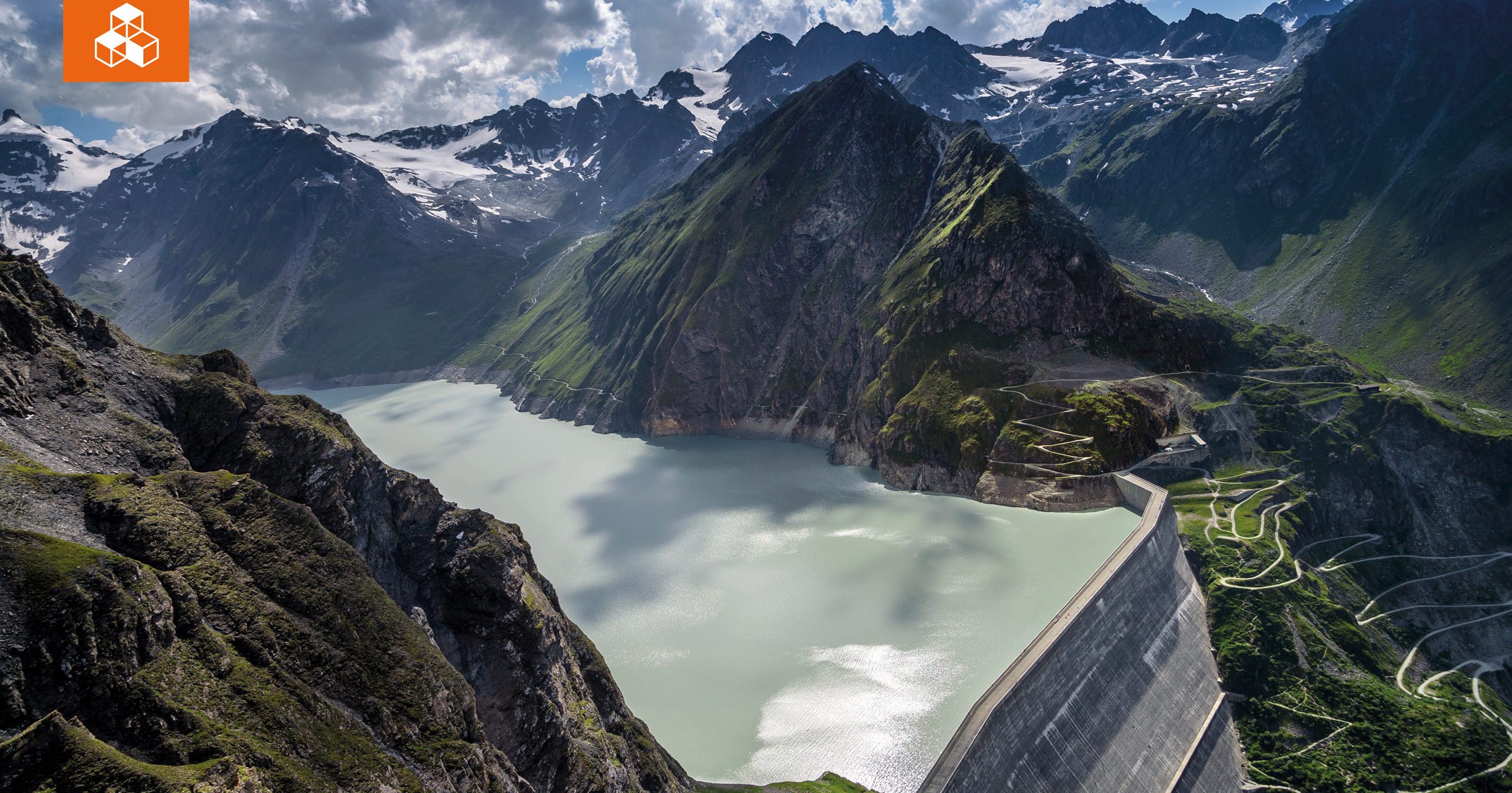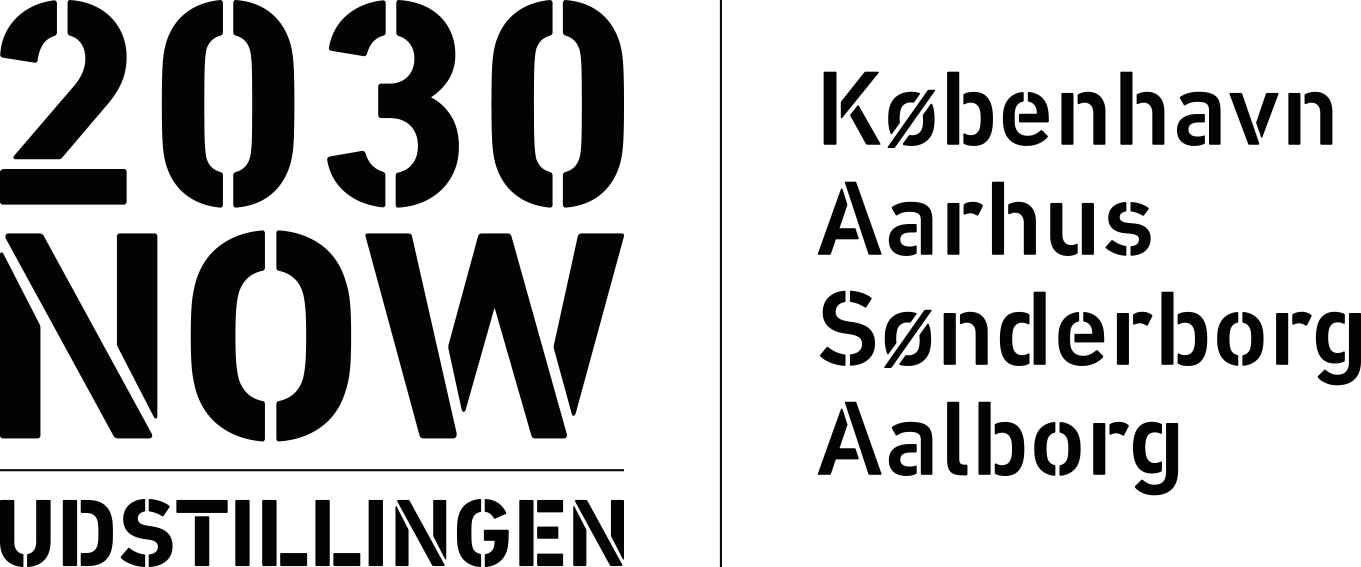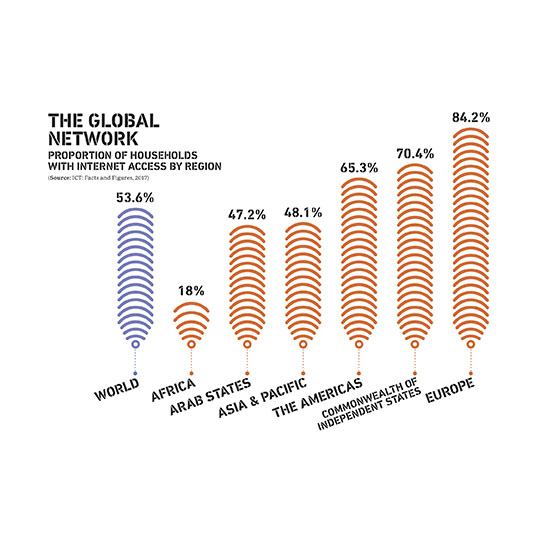
Switzerland is more than cuckoo clocks, banks and cheese – nowhere else has so many dams in so small an area. More than 60% of Swiss electricity comes from hydropower. At 285 metres, the gigantic Grande Dixence dam is one of the highest in the world. It collects meltwater from 35 glaciers in the area. As climate change melts more of the glaciers faster than ever before, the dams stop the excess water and use it to generate energy before it inflicts any damage on the pristine beauty of the Alps.
GOAL BY 2030: USE RESEARCH, INNOVATION AND NEW TECHNOLOGIES TO DEVELOP MORE EFFICIENT AND STABLE WAYS TO TRAVEL AND COMMUNICATE – BY ROAD, RAIL, AIR, SEA, THE INTERNET AND OTHER TYPES OF INFRASTRUCTURE.
Humans have caused the most serious problems facing the world, but that also means that we hold the key to solving them. Human well-being and economic development depend on our ability to meet, talk, trade, travel and exchange ideas and knowledge.
In Denmark, we take the internet for granted, and 99% of children and young people have access to it at home. It’s easy to forget just how big a role it plays in our day-to-day lives. In much of the poorest parts of the world, only a minority can afford and have access to the internet. In Africa, only one in five is online, and the figure is even lower for girls and women. Often, they don’t have a mobile phone either, so the many benefits of life online are out of reach.
Being cut off from the digital world makes it difficult to spread ideas and inventions and to learn from others. By 2030, everyone, including in the poorest countries, must have access to the internet. This will require research and loans to SMEs all over the world to invest in new and improved technologies and solutions. Industry will also need to come up with better production methods that do not deplete the Earth’s resources.


